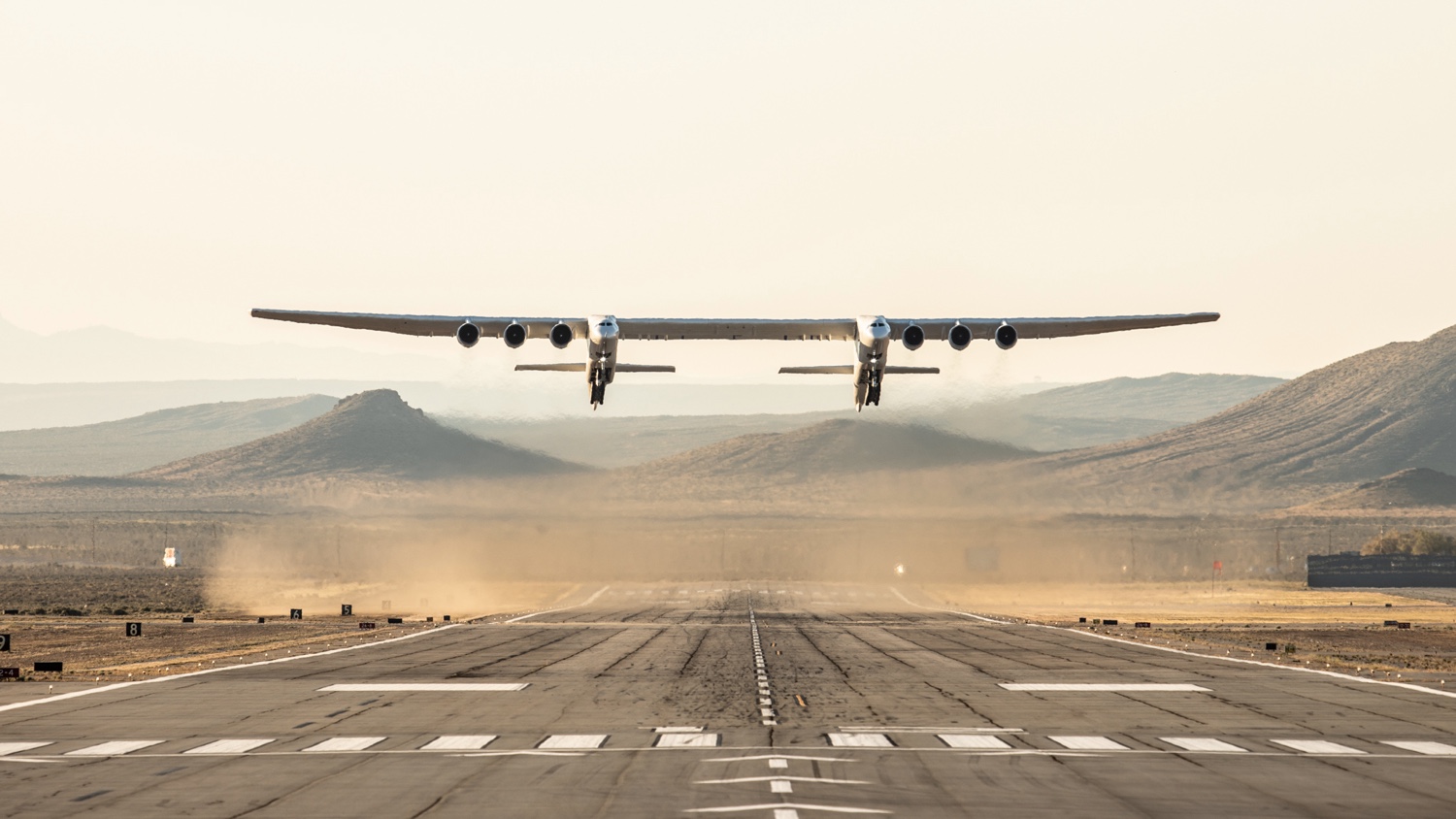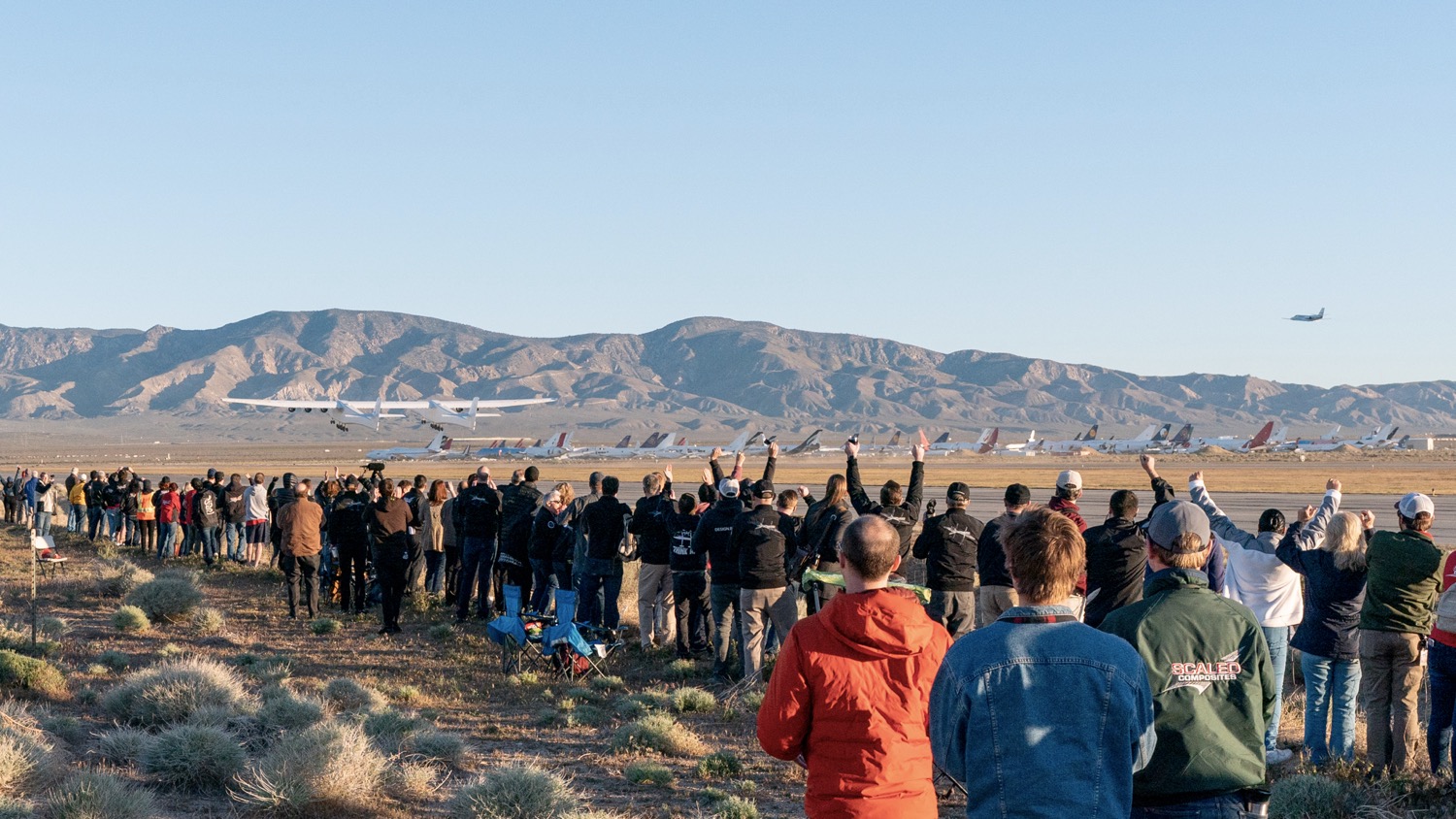Stratolaunch, the World's Biggest Aircraft, Makes Historic 1st Flight

An odd-looking, double-bodied airplane with a wingspan as long as a football field just took to the skies today (April 13) from the Mojave Air & Space Port in California. This was the first flight for Stratolaunch, which is billed as the world's largest aircraft.
Designed by Stratolaunch Systems Corp. to carry satellites into low-Earth orbit, the craft spent 2.5 hours in the air above the Mojave Desert at altitudes up to 17,000 feet (5,180 meters). The plane reached speeds of 189 mph (304 km/h) and performed several flight control maneuvers, including "roll doublets, yawing maneuvers, pushovers and pull-ups, and steady heading side slips," the manufacturer Stratolaunch said in a statement. "Today's flight furthers our mission to provide a flexible alternative to ground launched systems," the company said.
The aircraft is meant to carry satellites about twice as high as this test brought it — 36,000 feet (10,970 m) — at which point it would become a mobile launch pad of sorts by releasing the satellites and their launchers into orbit. Stratolaunch would then return to the runway. According to Allen, who died Oct. 15, 2018, this system would make satellite launches much easier and faster. That's because there'd be no need for ground launches of rockets. Rather, Stratolaunch could take off from various runways and then fly to a spot with good weather. [In Photos: Building the World's Largest Airship (Airlander 10)]

While the flight crew would sit in the right fuselage, the left fuselage would hold flight data systems. And the payload would sit under the conjoined center wing, which is designed to carry up to 500,000 pounds. To get this beast down a runway and off the ground, the company equipped it with six 747 engines and 28 wheels.
Stratolaunch has a wingspan of 386 feet (118 m) and is 26 feet (8 m) long. Though Stratolaunch is the largest plane by wingspan, another craft, the helium-filled Airlander 10, takes the title of the longest aircraft currently flying with a length of 302 feet (92 m).
"We all know Paul would have been proud to witness today's historic achievement," said Jody Allen, Chair of Vulcan Inc. and Trustee of the Paul G. Allen Trust.
- Supersonic! The 11 Fastest Military Airplanes
- Interstellar Space Travel: 7 Futuristic Spacecraft to Explore the Cosmos
- The Hindenburg Wasn't Alone: 23 Intriguing Airships
Originally published on Live Science.
Sign up for the Live Science daily newsletter now
Get the world’s most fascinating discoveries delivered straight to your inbox.
Jeanna Bryner is managing editor of Scientific American. Previously she was editor in chief of Live Science and, prior to that, an editor at Scholastic's Science World magazine. Bryner has an English degree from Salisbury University, a master's degree in biogeochemistry and environmental sciences from the University of Maryland and a graduate science journalism degree from New York University. She has worked as a biologist in Florida, where she monitored wetlands and did field surveys for endangered species, including the gorgeous Florida Scrub Jay. She also received an ocean sciences journalism fellowship from the Woods Hole Oceanographic Institution. She is a firm believer that science is for everyone and that just about everything can be viewed through the lens of science.









